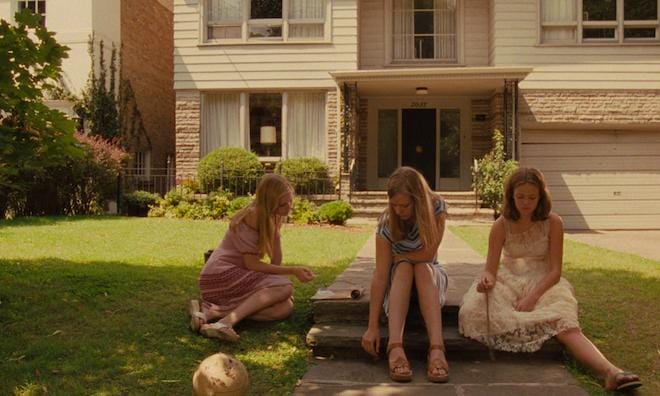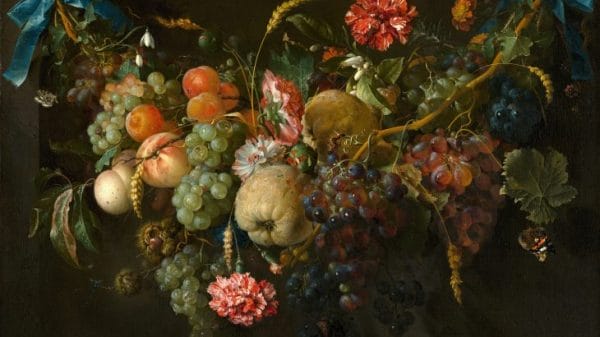From the contemplative 1993 novel to the evocative Sofia Coppola adaptation, “The Virgin Suicides” persists as an irresistible study of timeless adolescence. Today, the advent of the internet has preserved its legacy as a touchstone for discussions on societal pressures, decomposing adolescence, and oppressive girlhood.
Against the lethargic backdrop of a mid-70s Michigan suburbia, Jeffrey Eugenides lays the seeds of his meditative, emotionally arresting debut. The sensational tragedy of the five Lisbon girls takes center stage in a decade reeling from the aftermath of the 60s civil rights movement, anti-Vietnam war protests, and burgeoning feminism— endangering the hopes of any healthy coming of age. The Lisbon sisters are unreal characters, turning on the borders of female adolescence under the watchful gaze of male narrators and the weighty criticisms of society.
Over the last three decades, their developmental pains have turned them into symbols of feminine repression, lost innocence, and fermenting adolescence. Their legacy has since endured, immortalized by pop culture and in more recent years, the internet. The story of the five disintegrating sisters in Grosse Pointe, Michigan serves not only as a symbol of the decaying American front but is also indicative of a quieter, emotional cancer sifting through the Midwestern expanse from which Eugenides hails and laments—an ideal microcosm of the wider society and times.

The Virgin Suicides
The Lisbon girls— Lux, Cecilia, Therese, Mary, and Bonnie, aged thirteen to seventeen— are the driving forces, “stillpoints” if you will, of a waning, domestic era. Their sleepy suburban neighborhood in Detroit is rocked when they successively commit suicide in thirteen months, leaving behind mindless tragedy and an impenetrable legacy.
Nostalgia becomes a corruption of memory and time, haunting the male narrators who yearn over descriptions of their flaxen hair and faceless beauty — but who ultimately looked without ever truly seeing them. Together, the sisters model heavenly, hyper-feminine but ultimately restrictive ideals, and these impossible expectations catalyse a disillusionment with their reality.
The experiences of the Lisbon girls represent the aforementioned destabilization of the “teenage” in the 70s and foreground the disorder and difficulties of female adolescence. For young women, the transformative shift in the “teenage” is marked by sexualization, objectification, and profound limitations on their humanity. The narrative’s suffocating culture exacerbates this under the lascivious male gaze. Psycho-social disruption becomes the broken heart splintering through the body of their lives, tormenting and arresting them in their development.
In the end, their performance of agency amplifies their powerlessness in their own story, leaving audiences with pieces of women they will never become. Their tragic ending leaves an inaccessibility that has defined the girls in the minds of audiences and culture. Over several decades, the fictional narrators, critics and audiences have partaken in the dissection and interpretation of the characters to no satisfactory and complete avail.
The Cultural Fascination
The elusive nature of the Lisbon girls and their untimely demise has resulted in a mystery that has engaged critics, fans, and audiences since its first publication. The novel earned widespread critical acclaim, gathering a devoted audience and growing in social and popular culture over thirty years. Its timeless themes and emotional depth go beyond readership and have also made it a touchstone for discussions on adolescence, societal norms, and the complexities of human experience.

The cultural impact has extended into film, where it received a faithful adaptation of the story and characters. Sofia Coppola’s human, empathetic direction inspired the Lisbon girls to life in her dreamy directorial debut. Their beauty and tragedy is effectively translated from the narrative to a broader screen. The expressive visuals capturing the sunlit, gradual descent into the Lisbon sisters’ world portray the heavy emotions and bleak sensitivity of the source material on film. Coppola’s hyper-feminine vision, paired with ‘Air’s’ original music, introduced a new dimension of their characterisation, adding to their continuous legacy.
In the wider landscape, the experiences, visuals, and presence of the Lisbon girls have had a clear influence. Their iconic imagery and fresh, feminine visuals have informed several movements by photographers and artists with a creative emphasis on hyper-feminine production and direction in marketing and advertisements. The girls also left their imprint on fashion and style with modern girlhood trends that promote feminine, adolescent pastels, delicate fabrics, and handmade accessories.
The Internet Resurgence
On the internet, it has broadened its cult following, with fans showing their devotion through art, communities, and events dedicated to the characters and themes. Social media has created places for new audiences to share and communicate their interests and media. The rise of Tikok, Pinterest, and other image curation apps has revived the sisters with new Gen-Z audiences.
On TikTok, trending mood boards that promote dressing and relating to the characters are popular forms of entertainment. But, the Lisbon girl phenomenon is mostly visible on image-based platforms like Pinterest and Tumblr, where women share their memes, character references, and dedicated fan pages. The popular film adaptation also served as inspiration for online fashion and beauty trends, with young girls copying the visual style created for the characters in the film. From custom, aesthetic curations to online personality quizzes, there is excitement to match a Lisbon girl for you.

The widespread appeal of the characters can be credited to changing attitudes in recent years, with emerging movements like the 2023 Barbie phenomenon celebrating femininity. The Lisbon girls have become permanent symbols of girlhood. Their timeless resonance with women is due to being frozen in the universal, pubescent age, resigning them to be relatable forever.
New cultural perceptions also mean that messages from the book and the film are more understood in the context of today, where emphasis is placed on nuanced and complex understandings of gender and women. The digital age has also allowed women to share and identify their experiences in a previously impossible way. Social media platforms have played a crucial role in sharing older forms of media, leading to new conversations and a new kind of digital immortalization.
The Imprisonment of Being a Girl
The popularity of the sisters with women stems from their representation of the internal, psychological experiences overlooked in their gender. The characters’ experiences explore some of the unique challenges young women face in their personal expression and identity, especially in the vulnerable light of adolescence. The characters’ struggles also align with current discussions around female autonomy and well-being, which are issues that women still face today.
From the 1990s until the present day, the Lisbon girls have traveled across generations, offering a vulnerable expression of femininity in the wider human experience. They have become more than fictional characters but also symbols of feminine complexity, resilience, and the timeless struggles of adolescence. In the ever-evolving landscape of social norms and attitudes, their story has found new life in the digital age, connecting with Gen Z audiences through platforms like TikTok and Pinterest, immortalizing and preserving their legacy in a new way.














Momo
January 11, 2024 at 5:12 am
This was a wonderful piece. I think it’s interesting to see my fyp being translated in written words.
Odun Animasaun
January 11, 2024 at 11:11 am
Such a beautifully written piece. Informative, thought-provoking and captivating.